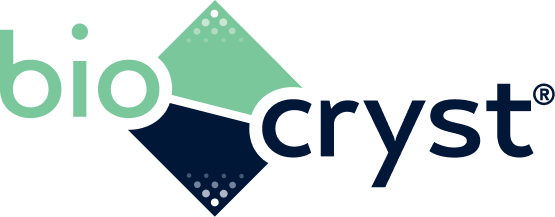companies, including Bristol Laboratories, Genentech and Sangstat. He currently continues to serve on the board of Travere Therapeutics, Inc. and serves as chairman of the board of Acer Therapeutics Inc., a publicly-traded pharmaceutical company. Mr. Aselage is also a member of the board of Acuitas Therapeutics, a private biotechnology company. Mr. Aselage holds a Bachelor of Science in biology from the University of Notre Dame and serves on the advisory council of the University of Notre Dame Department of Science. Mr. Aselage’s extensive experience as an executive in the industry and his experience with rare disease therapies contribute valuable insight and experience to the Board.
Steven K. Galson, M.D., MPH, was initially appointed to the Board in September 2021. From 2010 to 2021, Dr. Galson served as Senior Vice President, Research and Development, at Amgen, where he also led regulatory affairs. Prior to joining Amgen, Dr. Galson spent more than 20 years in public service roles across the U.S. Department of Health and Human Services (HHS), Department of Energy (DOE), Environmental Protection Agency (EPA), and Centers for Disease Control and Prevention (CDC). From 2001 to 2007, Dr. Galson progressed from deputy director, to acting director, to director of the Center for Drug Evaluation and Research (CDER) at the U.S. Food and Drug Administration (FDA). From 2007 to 2009, he served as acting surgeon general of the United States. Dr. Galson currently serves on the board of directors of Insilico Medicine, a private pharma technology company, and he previously served on the board of directors of Vanda Pharmaceuticals Inc., a publicly-traded biopharmaceutical company. Dr. Galson received a B.S. in biochemistry from the State University of New York at Stony Brook, an M.D. from the Mt. Sinai School of Medicine, and a master’s degree in public health from the Harvard School of Public Health. Dr. Galson’s industry background, research and development experience, and extensive regulatory experience provide valuable knowledge and insight to the Board.
Kenneth B. Lee, Jr. was initially appointed to the Board in June 2011. Mr. Lee has over 40 years of experience counseling management teams, boards of directors and investors of technology-based companies worldwide. He is currently a General Partner with Hatteras Venture Partners, LLC, a venture capital fund focusing on life science companies, which he joined in 2003. Previously he was President of A.M. Pappas & Associates, LLC, following 29 years with Ernst & Young LLP, where he was most recently Managing Director of the firm’s health sciences corporate finance group, and at one time served as the National Director of the Life Sciences Practice. Mr. Lee received a Bachelor of Arts degree from Lenoir-Rhyne College and an MBA from the University of North Carolina at Chapel Hill. Mr. Lee currently serves on the board of directors of Eyenovia, Inc., a publicly traded ophthalmic biopharmaceutical company. He has previously served on the boards of the public companies Abgenix, Inc., Aralez, Inc., CV Therapeutics, Inspire Pharmaceuticals, Maxygen, Inc., and OSI Pharmaceuticals and previously served on the boards of the private companies Aerami Therapeutics, Clinipace, Clinverse and A.M. Pappas & Associates. Mr. Lee’s experience advising biotechnology companies regarding financial and partnering strategies, his extensive background in finance and his experience serving on the boards of both public and private biotech companies contribute valuable insight and experience to the Board.
Alan G. Levin was initially appointed to the Board in February 2020. Mr. Levin served as Chief Financial Officer of Endo Health Solutions Inc., a global specialty healthcare company, from June 2009 until September 2013. Prior to joining Endo, Mr. Levin worked with Texas Pacific Group, a leading private equity firm, and one of its start-up investments. Before that, he was Chief Financial Officer of Pfizer, Inc. where he worked for 20 years in a variety of executive positions of increasing responsibility, including Treasurer and Senior Vice President of Finance & Strategic Management for the company’s research and development organization. He has been a member of the board of directors of Diffusion Pharmaceuticals Inc., a publicly traded development stage oncology company, since 2015, and was a member of the board of directors of Aceto Corporation, a former publicly traded seller and distributor of generic drugs, pharmaceutical ingredients, and performance chemicals, from 2013 to 2019. In addition, Mr. Levin is a member of the advisory board of Auven Therapeutics, a private equity fund, and a member of the board of directors of the Critical Path Institute, a non-profit collaboration between the FDA and the pharmaceutical industry, focused on accelerating development of and streamlining regulatory requirements for innovative medicines. He earned a bachelor’s degree from Princeton University and a master’s degree in accounting from New York University’s Stern School of Business. Mr. Levin is a certified public accountant. Mr. Levin’s extensive experience in strategic planning, capital markets, financial reporting, tax planning, and business development contribute valuable insight and experience to the Board.
George B. Abercrombie was initially appointed to the Board in October 2011. Mr. Abercrombie has over 30 years of experience as a business leader in the pharmaceutical industry. Mr. Abercrombie held the position of Senior Vice President and Chief Commercial Officer at Innoviva, Inc., a publicly traded bio-pharmaceutical asset



